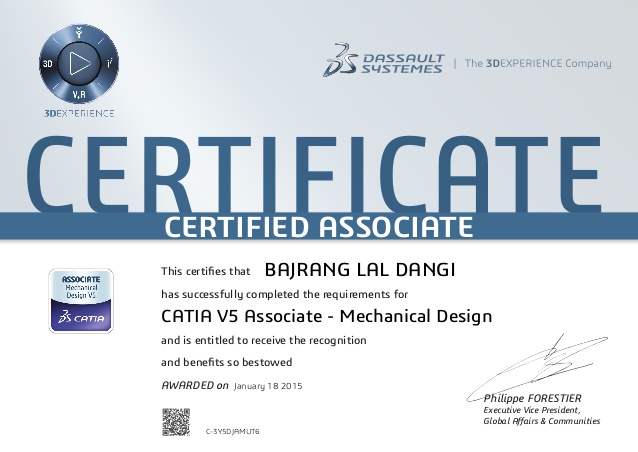Overview:
CATIA (an acronym of computer-aided three-dimensional interactive application, pronounced /k?'ti?/) is a multi-platform software suite for computer-aided design (CAD), computer-aided manufacturing (CAM), computer-aided engineering (CAE), PLM and 3D, developed by the French company Dassault Systems.
ANSYS APDL
Benefits
- Authorized ANSYS certification from ANSYS.INC.
- Learning from a Certified Instructor .
- Students will be offered with worthy work book.
- Innovative and convenient Learning methodology access
Course Outcome
The primary advantage CATIA has is something like 30 years of momentum of being the CAD package of choice for some of the world's largest manufacturing and engineering companies in the automotive/aerospace/maritime industries. Once a big multinational company picks a CAD system, switching over is extraordinarily difficult, so CATIA has build up a rather secure position in the market. In turn, CATIA becomes the necessary tool of choice for all the Tier 1 and Tier 2 suppliers to those massive companies.
First, you can edit CATIA files directly-which is a pain in the ass with any other software, including SolidWorks. This is valuable because CATIA has 20 years of legacy as a platform of defense and aerospace so there are hundreds of terrabytes of IP in CATIA format.
The second advantage is that Dassault's strategy attempts to force down your throat the future of CAD and design data. Their attempt to license Enovia, 3D experience and all of their little web services and data analysis apps does the job of uniting data formats to the purpose of acheiving the digital mockup of the entire product lifecycle. Their applications aren't very well thought out and are proprietary which means Dassault's objective is the dominate all of engineering and manufacturing and squeeze out other platforms. However, until vendors begin supporting common, open formats for data and we stop thinking of engineering and production in terms of files and folders and sheets, the dream of open integration remains a dream.

